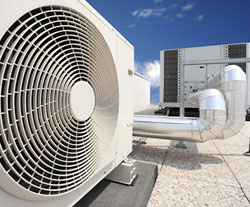
Categories
- Home
- Types Of Gas Ventilation
- Equipment Gas Ventilation
- Gas Appliances Ventilation
- Gas Boiler Ventilation
- Gas Heater Ventilation
- Gas Meter Ventilation Requirements
- Gas Pipe Ventilation
- Gas Range Downdraft Ventilation
- Gas Roof Ridge Ventilation
- Gas Stove Ventilation
- Gas Ventilation Grills
- Gas Ventilation Products
- Gas Ventilation Units
- Heating System Gas Ventilation
- Marine Oil And Gas Ventilation
- Mechanical Gas Ventilation Systems
- Mobile Home Gas Ventilation
- Natural Gas Ventilation
- Roof Ventilation
- Soil Gas Ventilation
- Type B Gas Ventilation
- Underfloor Gas Ventilation
- Gas Ventilation Explained
- Gas Ventilation Suppliers
Mechanical Gas Ventilation Systems
When discussing the importance of gas lines and appliances, people often overlook the significance of having proper ventilation. The truth is that the majority of people are not aware that gas needs a certain amount of air, in order to combust properly. Therefore, in order to achieve the point of combustion, you must count with mechanical gas ventilation systems to make things run smoothly. As you may already know, gas appliances are usually installed where the mechanical ventilation system is located, and the reason behind it is to ensure the accurate ventilation of the same.
General Requirements for Mechanical Gas Ventilation
There are several engineering factors that need to be considered when setting up mechanical gas ventilation systems. Anything from the design to the actual setup of the different parts is very important, and even once the structure has been placed together, the contractors are obliged to make sure everything is running correctly. Moreover, there are numerous requirements that need to be met when installing or maintaining a mechanical gas ventilation system, such as:
- Exhaust/ventilation system must maintain a volume that doesn’t exceed what is established by the state
- Ducts and pipes must be inspected to where they won’t cause the malfunctioning of the system
- Exhaust waste should be disposed properly
- Mechanical gas ventilation systems must keep up with the standard ventilation rate
- Outside air should not affect the ventilation of indoor air
Available Options for Mechanical Gas Ventilation Systems
There are two main types of ventilation procedures, which are natural ventilation and mechanical ventilation. The second type is among the best known ventilation methods given the fact that it helps combustion happen faster, and because natural ventilation isn’t always the most practical way to perform things. In addition, there are scenarios where mechanical gas ventilation systems are extremely required, mostly due to the type of appliance and the conditions of the structure. Generally, there are two main options when a mechanical gas ventilation system required, which are:
- Two types of mechanical systems: inlet and exhaust ventilation
- One mechanical system (gas ventilation) along with a natural inlet
Perhaps you’re wondering why not drop the entire mechanical system and just work with a natural inlet; well, this is due to the fact that neutral air pressure is needed in order to avoid any gas being leaked to other areas of the house.
Mechanical Gas Tools Used in the Kitchen
Certainly, mechanical gas ventilation systems are used for numerous scenarios, especially because they have become quite essential. They are widely used in the construction of kitchen areas and large restaurants or diners, where it’s needed to ventilate the air regularly. Certainly, there is an abundance of different equipment tools that can be used in a kitchen, which can help the mechanical gas ventilation systems work even better. Some of these pieces of equipment are:
- Masa cookers
- Gas oven (max. temperature 250°F)
- Kettle
- Roaster
- Broiler
- Oven Hood / Exhaust Fan
- Brain Marie
- Deep fat fryer
- Grooved griddle / grill
- Rotisserie (max. temperature 250°F)
